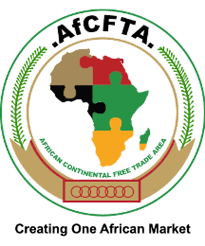Africa Manufacturers urged to use AfCFTA to building strength at home and BRICS+ to negotiating power abroad

There have been great narrations from industry players in Africa as global power blocs shift and trade alliances redraw themselves in real time as to whether Africa should deepen alignment with the BRICS+ group or consolidate gains under the African Continental Free Trade Area (AfCFTA) or can Africa strengthen AfCFTA at home while leveraging BRICS+ abroad—without being consumed by either? The latest PAMA bulletin has analyzed the two scenarios and came up with the way forward for the African manufacturers who now appear to be at cross road due to emergence of the BRICS+ group and the quest to consolidate gains under the African Continental Free Trade Area (AfCFTA), write Editor Gentechnews, Tony Nwakaegho.
The BRICS+ group and the African Continental Free Trade Area (AfCFTA) have been a great saw puzzle for African manufacturers to solve.
According to the Pan-African Manufacturers Association (PAMA) bulletin news, this latter question holds particular relevance in Africa’s quest for industrial transformation, particularly through the pursuit of manufacturing excellence, noting that with BRICS expanding to include Egypt, Ethiopia, and other African countries, and AfCFTA now entering its first real implementation decade, African manufacturers are standing at a critical crossroads: global opportunity vs continental market consolidation.
It highlighted that the rise of BRICS+, with China, India, Brazil, Russia, and now new African members and partners, signals a bold recalibration of global influence, while the Africa’s own trade integration vision, the African Continental Free Trade Area (AfCFTA), is slowly but steadily unfolding, promising to recast the continent not as a patchwork of national markets but as a unified industrial landscape for a regional trade-enabled economic resurgence.
The AfCFTA is Africa’s flagship trade integration project—an ambitious vision to create the largest free trade area in the world by number of countries and with over 50 African nations signed on, it promises to boost intra-African trade, harmonise rules of origin, reduce tariffs, and support local industries.
For manufacturers, AfCFTA offers: A captive continental market of 1.4 billion people; Opportunities for regional supply chains (e.g., West African pharmaceuticals, East African leather, North African fertilisers); Stronger and harmonised policy alignment and industrial strategies under the AU’s BIAT and IDDA III frameworks; Emerging cross-border SME corridors and digital trade facilitation tools.
“But the reality on the ground is more sobering. Progress is slow. As of 2025, only a small subset of countries has begun actual trade under AfCFTA rules. Bottlenecks in customs, logistics, and trade finance continue to choke the system. The political will is present, but execution remains fractured. Notwithstanding, AfCFTA remains Africa’s best bet to industrialise from within, to manufacture for Africans with African value creation at the centre,” it added.
On the global front, it stated that BRICS is transforming into BRICS+, expanding its footprint to include countries from Latin America, the Middle East, and now Africa.
Together, BRICS+ accounts for over 40% of the global population and increasingly challenges the Western-centric financial and trade architecture.
For African manufacturers, BRICS+ offers: Access to huge markets with growing middle-class consumption; Easier financing via development banks like the New Development Bank (NDB); Technology transfer and industrial cooperation (e.g., agro-processing, EV assembly, digital infrastructure); Strategic non-dollar trade agreements and infrastructure deals.
It explained that this is not a marginal opportunity, but it’s a front-row seat at a table where new industrial orders are being written, though alignment with BRICS+ also carries risks.
It stressed that “BRICS+ is not a development agency. It is a geopolitical bloc advancing the interests of its largest members. Without a unified African front, the continent risks falling back into old patterns: supplier of raw materials, consumer of finished goods. Because it could deepen Africa’s dependence on external industrial giants, expose it to political rivalries, and potentially neglect African domestic value chains by incentivising reliance on low-cost imports.”
“Pitting AfCFTA against BRICS+ may be a false dichotomy. In essence, the idea that African countries must choose between BRICS+ and AfCFTA is dangerously simplistic. In truth, AfCFTA should be the foundation from which Africa engages BRICS+ with strength and clarity. The real opportunity lies in leveraging AfCFTA as the launchpad for African governments to engage BRICS+ from a position of regional strength.”
PAMA proffered that instead of individual African countries cutting deals with BRICS+, a unified AfCFTA-led approach could strengthen Africa’s bargaining power, adding that by negotiating collectively and strategically directing investments to high-potential regions, the continent would be better positioned to ensure balanced industrial development and reduce intra-regional disparities.
According to PAMA, “A well-functioning AfCFTA could enable cross-border industrial clusters that meet export quality for BRICS+ markets.
“Regional manufacturing hubs, from pharmaceuticals in Nigeria to green tech in Morocco, can scale up production under the AfCFTA framework and then export to BRICS+ markets under smart, reciprocal trade agreements that prioritise value-added exports and mutual industrial development.
“African value chains absorb BRICS+ technology and finance—but on Africa’s terms, with local job creation, IP retention, and export competitiveness. This is industrial realism, but only if Africa leads with a strategy-first mindset.”
Additionally, it stated that to navigate this dual engagement smartly, African manufacturers and policymakers, African governments must act deliberately with these four priorities in mind:
“Strengthen AfCFTA Implementation: Invest in regional logistics, customs interoperability, and standards harmonisation. AfCFTA is only as strong as its domestic execution.
“Leverage BRICS+ for long-term industrial capital, machinery partnerships, and research collaborations: Focus on technology parks, machinery acquisition, and co-innovation—not just exports or financing deals.
“Negotiate Trade Clauses That Favour Manufacturing: In both AfCFTA and BRICS+ dialogues, push for policies that benefit manufacturing, including agro-processing, automotive assembly, pharmaceuticals, foods, and additive and green manufacturing.
“Adopt a ‘Continental First’ Approach: Before exporting raw cashews to India or lithium to China, Africa must ask: Can this be processed domestically? Can it be branded as African? Can we export the finished product instead of merely exporting potential? Prioritising value addition at home is essential to breaking the cycle of extractive trade and fostering sustainable industrial transformation.”
It opined that in a world where multipolar alliances are becoming the new norm, the choice for Africa is not between BRICS+ and AfCFTA., noting that AfCFTA is our continental backbone, while BRICS+ is a potential amplifier.
“If handled wisely, both can serve the goal of African industrial transformation. The future is not about choosing sides. It’s about building strength at home and negotiating power abroad. Africa can no longer afford to be everyone’s market. It must now become the world’s manufacturing partner on its own terms,” PAMA emphasized.
